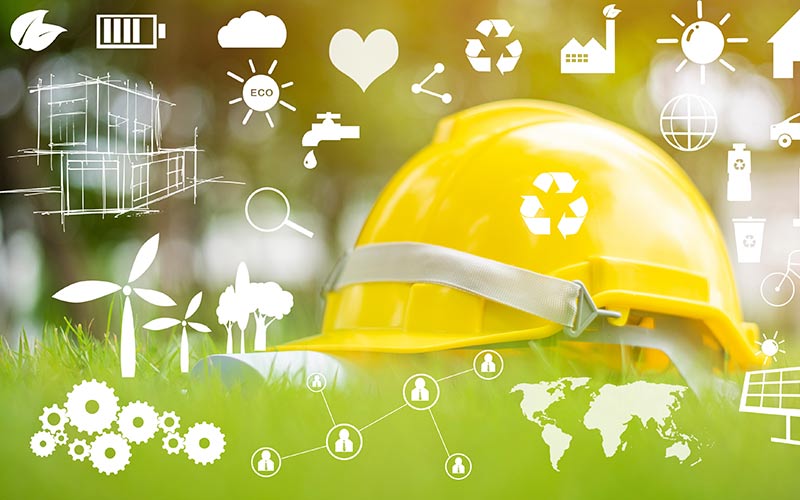Circular economy (CE) has gained increasing attention in recent years as a solution to the environmental and resource challenges posed by traditional linear economies. In linear economies, resources are extracted, used, and then discarded as waste. In contrast, circular economy aims to minimize waste and reduce the need for raw material extraction by keeping products, materials, and resources in use for as long as possible. The transition from a linear to a circular economy has significant implications for environmental sustainability, economic efficiency, and future business models.
What Is Circular Economy?
Circular economy is an economic model designed to reduce waste and promote the continuous use of resources. This model is based on three core principles:
- Designing waste and pollution out of the system – Products and services are designed to minimize environmental impact, focusing on resource efficiency.
- Keeping products and materials in use – Products are kept in the loop through reuse, repair, refurbishment, and recycling.
- Regenerating natural systems – Circular economy not only avoids harm to the environment but also aims to restore ecosystems and return valuable resources to nature.
This model mimics processes in nature; nothing is wasted, and every output serves a new purpose in another process. A well-designed circular economy reduces the demand for raw materials and lowers the environmental impact of production and consumption.
Why Is It Important?
- Resource Conservation
The world’s natural resources are finite. The transition to a circular economy allows businesses and societies to reduce their dependence on these limited resources. This is especially critical as global resource consumption is expected to double by 2060. The circular approach ensures that resources remain in use for as long as possible, preventing their depletion.
- Waste Reduction
In a circular economy, the concept of waste is redefined. Waste becomes a resource; materials are reused, recycled, or remanufactured. This reduces the amount of waste sent to landfills and incinerators and minimizes environmental pollution.
- Economic Resilience and Innovation
Circular economy encourages businesses to rethink product design and business models. Services such as leasing, product take-back, and remanufacturing create new revenue streams. This can reduce production costs while increasing profitability.
Additionally, circular practices make economies more resilient by decoupling economic growth from resource extraction. Businesses relying on closed-loop systems are less vulnerable to fluctuations in resource prices and availability.
- Fighting Climate Change
Circular economy can play a crucial role in reducing greenhouse gas emissions. The production, use, and disposal of products contribute significantly to global emissions. Circular economy helps achieve climate goals by promoting energy efficiency, reducing material consumption, and supporting the use of renewable energy.
Future Expectations of Circular Economy
- Global Adoption
Governments and international organizations are increasingly recognizing the importance of transitioning to a circular economy. For example, the European Union has implemented the Circular Economy Action Plan as part of the European Green Deal, which aims to achieve climate neutrality by 2050. Countries like China, Japan, and Canada are also adopting similar initiatives.
As more countries embrace circular economy policies, global trade and production systems may shift to support circular practices. This could lead to the standardization of cross-border circular business models and practices, supporting the creation of sustainable global economic systems.
- Technological Advancements
The future of circular economy will largely depend on technological developments. Advanced recycling technologies, digital platforms for product tracking, and AI-supported resource management tools will enable more efficient circular systems. These technologies will facilitate the global growth of circular practices, making it easier for businesses to implement circular strategies.
- New Business Models
The transition to a circular economy will lead to the emergence of new business models based on product-as-a-service (PaaS) approaches. In these models, companies retain ownership of products and sell the value they provide. Leasing, subscription services, and take-back programs will become more widespread, enabling businesses to derive more value from their products while reducing resource consumption.
- Consumer Engagement
The future success of the circular economy will also depend on consumer behavior. Growing sustainability awareness is increasing demand for environmentally friendly products and services. As consumers increasingly prefer companies that operate according to circular economy principles, businesses that align with these values will gain access to new markets and build brand loyalty.
Conclusion
Circular economy represents a profound shift in production, consumption, and resource management processes. By keeping materials in the loop, increasing resource efficiency, and minimizing waste, it offers a path to a more sustainable and resilient future. Beyond environmental protection, circular economy generates economic opportunities, fosters innovation, and contributes to addressing global challenges such as resource scarcity and climate change. With the global spread of circular practices, the future of circular economy looks promising and has the potential to reshape industries, economies, and societies.


